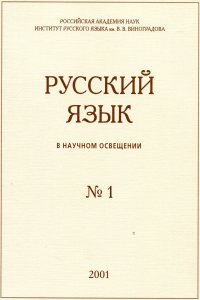Standardizing the distribution of final Ъ and ь after the letters of hissing consonants and affricates in the Russian literary language of the 18th and 19th centuries
Abstract:
The article focuses on the standardization of the use of final Ъ and ь in 18th and 19th century Russian business records such as “Vedomosti”, “Sanktpeterburgskie vedomosti” and “Moskovskie vedomosti”. As in previous periods, the variation zone includes positions after the consonants ж and щ —non-paired in terms of velarisation / palatalization — whereas the position after ц and ч is characterized by stable spelling. By the beginning of the 19th century the use of the final Ъ and ь after non-paired palatalized and velarized consonants had become fixed according to grammatical criteria, though the rule was first formulated completely and correctly only in A. Kh. Vostokov’s Grammar (1835). Earlier, as well as most later, grammar books differentiate between Ъ — ь according to the desinences of the other case forms, which only indirectly points to the grammatical characteristics of the word. Variation in the endings of the genitive plural forms of feminine nouns had retained up to the 1850s, which can be explained by the grammarians’ lack of attention to the orthographic standardization of the form and by the influence of the tradition according to which the final letter was determined by the quality of the preceding consonant. The codification may have been complicated by the rule active in the 18th and 19th centuries that demanded spelling of Ъ or ь at the end of words in accordance with the use of а or я in other case forms.


